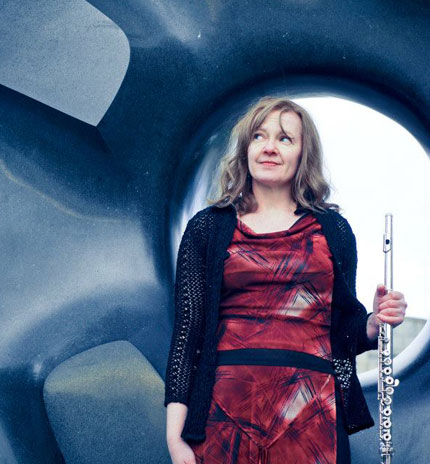In that singular moment when the hijacked airplanes crashed into the World Trade Center on September 11, 2001, everything changed. It was as if, overnight, the entire world became louder, more turbulent, more terrifying—and far more fearful.

Kevin Puts. Photo Credit: David White
This sudden paradigmatic shift was the sole inspiration for Pulitzer Prize-winning composer Kevin Puts’ Symphony No.2, a 21-minute masterwork exploring the way in which the events of 9/11 shook our nation to its very core. Though the symphony first premiered in 2002, just shortly after the terrorist attacks, it still rings with the same tempestuous passion and urgency today—nearly a decade and a half later.
The Peabody Symphony Orchestra, under the baton of Marin Alsop, breathes new life into that harrowing moment with a brand new album featuring three world-premiere recordings of works by Puts, his cataclysmic Second Symphony among them.
The programmatic symphony opens with a slow and steady orchestral build across the first eight minutes of the work, with a familiar timbral palette of piano and strings laying a soft foundation for delicate woodwind flourishes: the tonal soundscape of a gentle, proud, and perhaps naive nation.
But the blissful innocence and patriotic rhapsody is short-lived. A wandering violin solo stumbles into a violent orchestral upheaval: the aural equivalent of the planes crashing into the twin towers. A visceral darkness stains the orchestra’s entire harmonic palette, the thunderous melodies intertwining and colliding amidst the terrifying chaos. Yet at the height of this catastrophe, the solo unaccompanied violin returns for another musical reflection, calming the orchestra and leading it into an intimate epilogue. A clock-like pulse creates a sense of expectancy, uncertainty, and fear—yet as time passes the orchestra becomes unified once again, finding light, color, and enduring hope even amidst the lingering uncertainty.

Marin Alsop. Photo Credit: Grant Leighton
The work is followed by a performance of Puts’ “River’s Rush,” inspired in part by the extraordinary grandeur of the Mississippi River. Rapid successions of short melodic motives capture the coursing waves of the river, at one moment stormy and intimidating, the next gentle, soft, and reflective. Freely combining major and minor chords from different keys, Puts illustrates the utter majesty of the river: the delicate reflection of light against its waves, the constant, natural flow of its coursing veins, and the organic life both within and around it.
The album concludes with Puts’ Flute Concerto featuring soloist Adam Walker. Spritely, agile, and endlessly virtuosic flute melodies soar across all three movements, from the poignant and lyrical introduction of the first through the nocturnal andante of the second (featuring an unmistakable quote from Mozart’s Piano Concerto in C Major, K. 467), and clear through the tremendously energetic toccata finale of the third. The piece closes with an spirited flute solo playing off the rhythmic hand-clapping of the orchestra.

It’s a perfectly upbeat ending to an album which traverses the full range of human emotion, reminding us of the distinct power of music to help us reflect on our past, embrace and exist wholly in our present, and look forward with hopeful hearts toward our future.



 House of Doors is a concerto for flute and orchestra which will be premiered by Merrie Siegel and the Northwest Symphony Orchestra under the baton of Anthony Spain on Saturday, April 30 at 8pm.
House of Doors is a concerto for flute and orchestra which will be premiered by Merrie Siegel and the Northwest Symphony Orchestra under the baton of Anthony Spain on Saturday, April 30 at 8pm. 
